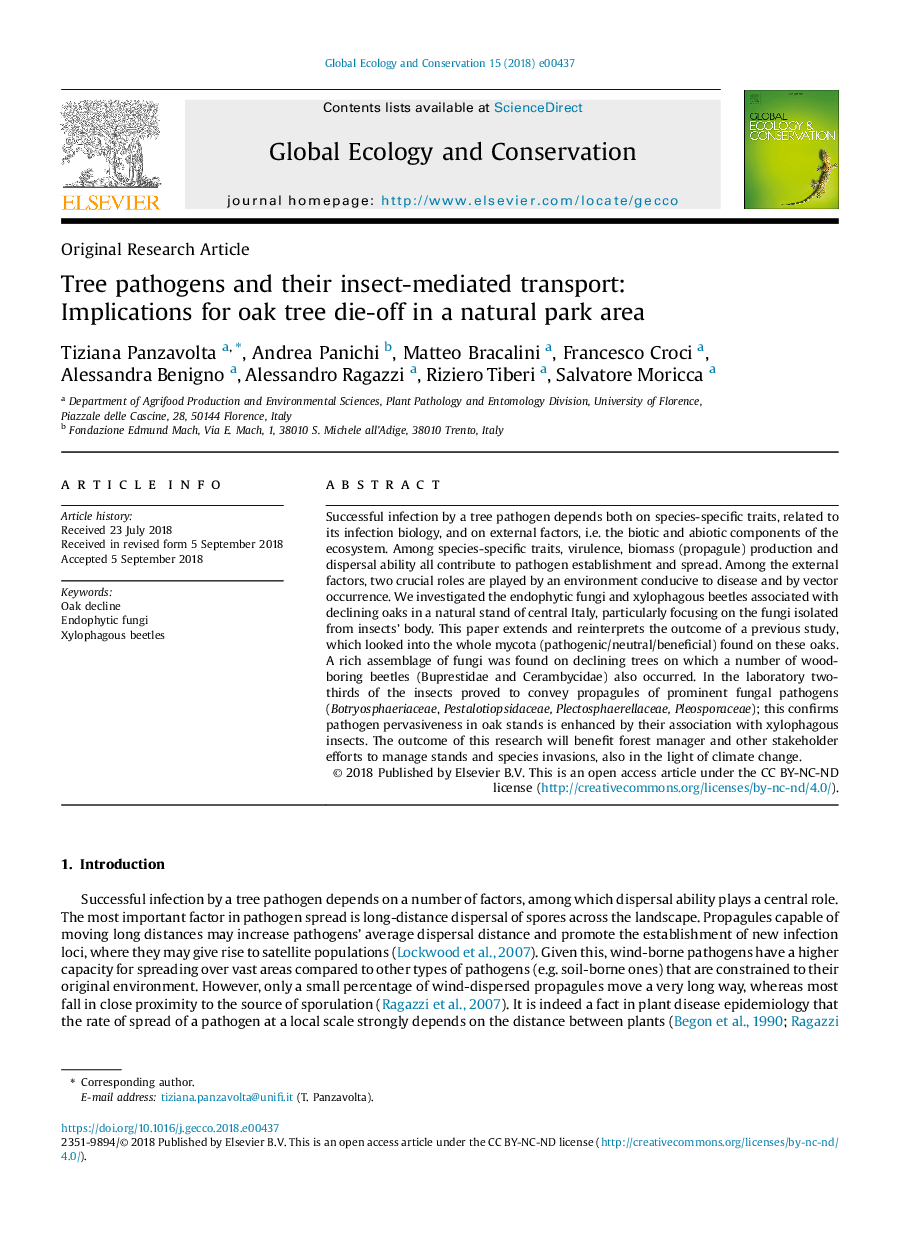| Article ID | Journal | Published Year | Pages | File Type |
|---|---|---|---|---|
| 10110092 | Global Ecology and Conservation | 2018 | 10 Pages |
Abstract
Successful infection by a tree pathogen depends both on species-specific traits, related to its infection biology, and on external factors, i.e. the biotic and abiotic components of the ecosystem. Among species-specific traits, virulence, biomass (propagule) production and dispersal ability all contribute to pathogen establishment and spread. Among the external factors, two crucial roles are played by an environment conducive to disease and by vector occurrence. We investigated the endophytic fungi and xylophagous beetles associated with declining oaks in a natural stand of central Italy, particularly focusing on the fungi isolated from insects' body. This paper extends and reinterprets the outcome of a previous study, which looked into the whole mycota (pathogenic/neutral/beneficial) found on these oaks. A rich assemblage of fungi was found on declining trees on which a number of wood-boring beetles (Buprestidae and Cerambycidae) also occurred. In the laboratory two-thirds of the insects proved to convey propagules of prominent fungal pathogens (Botryosphaeriaceae, Pestalotiopsidaceae, Plectosphaerellaceae, Pleosporaceae); this confirms pathogen pervasiveness in oak stands is enhanced by their association with xylophagous insects. The outcome of this research will benefit forest manager and other stakeholder efforts to manage stands and species invasions, also in the light of climate change.
Keywords
Related Topics
Life Sciences
Agricultural and Biological Sciences
Ecology, Evolution, Behavior and Systematics
Authors
Tiziana Panzavolta, Andrea Panichi, Matteo Bracalini, Francesco Croci, Alessandra Benigno, Alessandro Ragazzi, Riziero Tiberi, Salvatore Moricca,
